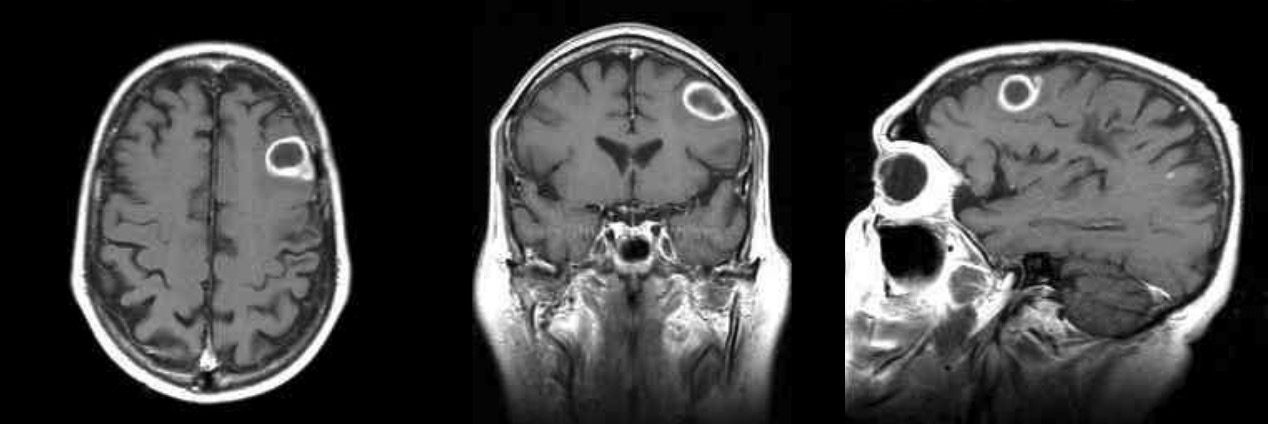Playlist
Show Playlist
Hide Playlist
Microbes that cause CNS Infections
-
Slides Introduction to CNS Infection.pdf
-
Download Lecture Overview
00:00 Then we need to figure out well what type of bacteria, virus, fungi, or parasite is this? And it turns out that different types of organisms affect different people during the course of the lifespan. So let's look first at the bacteria. In neonates, we see certain types of bacteria that can cause meningitis, encephalitis, or even cerebritis. The most common, as you see here, is group B strep followed by E. coli, listeria, Strep pneumoniae, and klebsiella. So those are the things we're going to think about and test for in young neonates. As we age in young children and young adults, we see a different organization of organisms and types of organisms, bacteria, that cause CNS infections. Strep pneumoniae, Neisseria meningitides, and H. flu are the most common that really we've seen less H. flu since the development of a vaccine for that agent. We don't see as much group B strep or listeria except in certain populations. In older adults, we think of Strep pneumoniae, listeria actually comes back and increases in its frequency like we saw in neonates, and group B strep rounds off the top 3. And then there are other rare causes of the bacterial infection in the brain or spinal cord and that includes legionella, bartonella, brucellosis or brucella, neurosyphilis, and TB. What about with viruses? Well, different types of viruses have different predilection for different areas of the brain. 01:26 Certain viruses like to infect the meninges, others like the subarachnoid space, and still others affect the brain parenchymal compartment and causes cerebritis. We call that tropism, and that's an organism's propensity, predilection to affect a certain area of the nervous system. 01:41 In the meninges causing meningitis, we see enteroviruses and adenoviruses and before the development of vaccines, we saw a lot of measles, mumps, and rubella. And those are things that we may see more of if vaccines are not utilized to prevent those agents in organisms. 01:58 In the subarachnoid space with encephalitis, we see commonly arboviruses which includes West Nile and you can see some other less common arboviruses there as well as herpes simplex virus, an important cause of encephalitis that we'll focus more on in a subsequent lecture. 02:13 For cerebritis, we also see arboviruses and HSV, so some similarities between that subarachnoid space and brain parenchymal compartment. And then there are some other viruses to know about. Varicella zoster likes to cause a vasculopathy and often an encephalitis. 02:28 Cytomegalovirus likes to cause a ventriculitis or an ependymitis. Epstein-Barr virus is something we see in patients with primary CNS lymphoma. HHV-6 is seen in immunocompromised patients and HIV can cause many types of infections including those in the brain. So some important things to think about when it comes to each of our types of infection in the nervous system. 02:51 And then there's some other things we should think about, fungal infections and a cryptococcal meningitis is something that we'll focus on when we think about fungal infections in the brain, but we can also see histo, coccidio, and blastomycosis infections. There are certain parasites that have a predilection for the brain, toxoplasmosis really likes the basal ganglia so we commonly see large basal ganglia lesions in patients with toxoplasmosis and that's usually occurs in immunocompromised patients. Neurocysticercosis is endemic in certain areas of the world and we can see that in certain populations with enhancing lesions often scattered throughout the brain and is an important thing to consider in patients presenting with epilepsy. 03:31 We can see tick-borne infections in the nervous system. Rocky Mountain Spotted Fever, Lyme, and ehrlichiosis are things that we often include on differential diagnoses in a patient who may have had a tick exposure. And then there are some non-infectious causes of meningeal irritation in a meningitis type of picture or an encephalitic presentation in an encephalitis type of picture. And some of those are non-steroidal anti-inflammatories, intravenous, immunoglobulin, IVIG, methotrexate, we can see paraneoplastic or cancer associated immune attacks on these areas and other potential non-infectious or aseptic causes of a CNS process.
About the Lecture
The lecture Microbes that cause CNS Infections by Roy Strowd, MD is from the course CNS Infections.
Included Quiz Questions
What is the most common cause of bacterial meningitis in neonates?
- Group B streptococcus
- Streptococcus pneumoniae
- Neisseria meningitidis
- Listeria monocytogenes
- Mycobacterium tuberculosis
Which of the following is a common cause of viral encephalitis?
- Herpes simplex virus
- Epstein–Barr virus
- Human papillomavirus
- Measles
- Rabies lyssavirus
Customer reviews
5,0 of 5 stars
| 5 Stars |
|
5 |
| 4 Stars |
|
0 |
| 3 Stars |
|
0 |
| 2 Stars |
|
0 |
| 1 Star |
|
0 |




